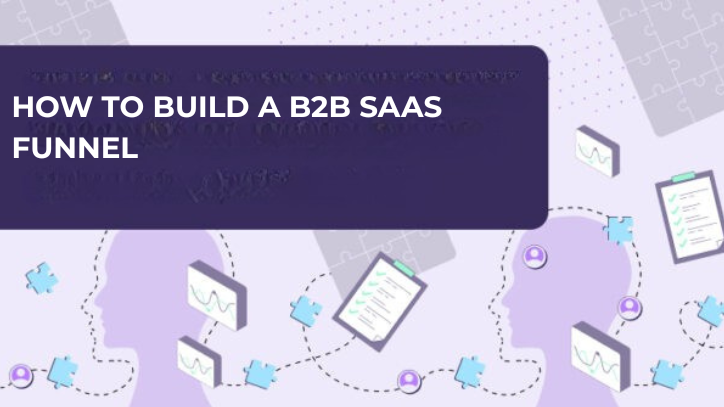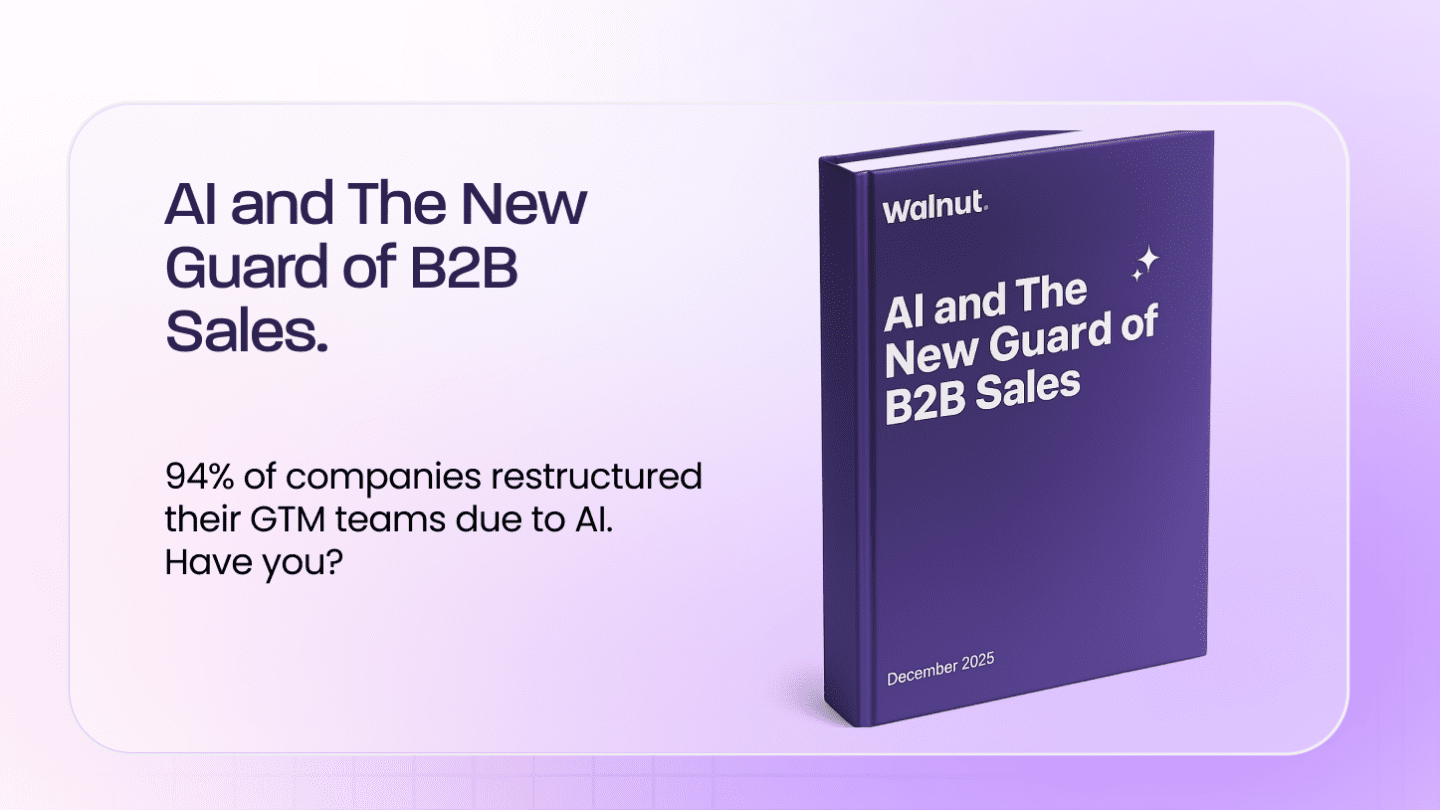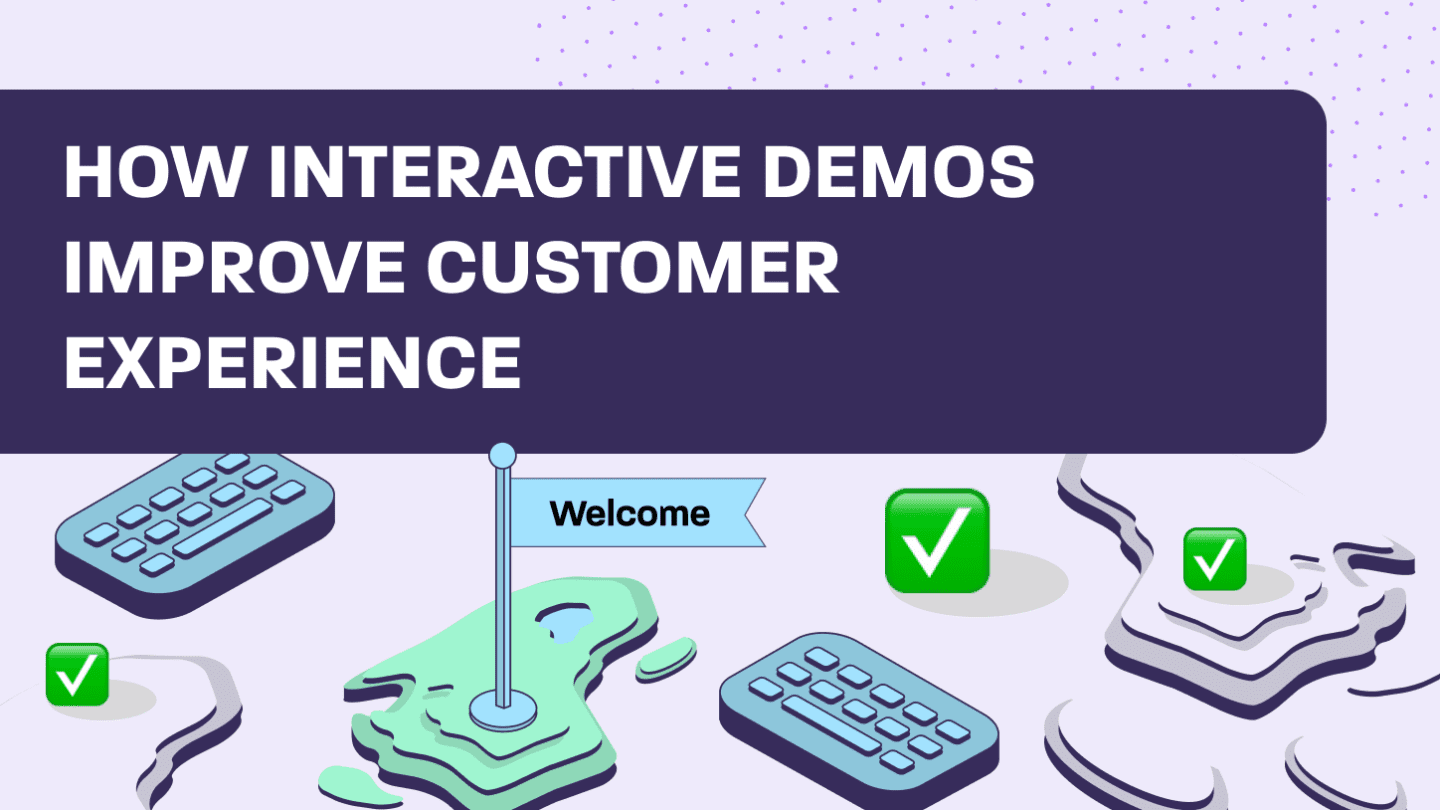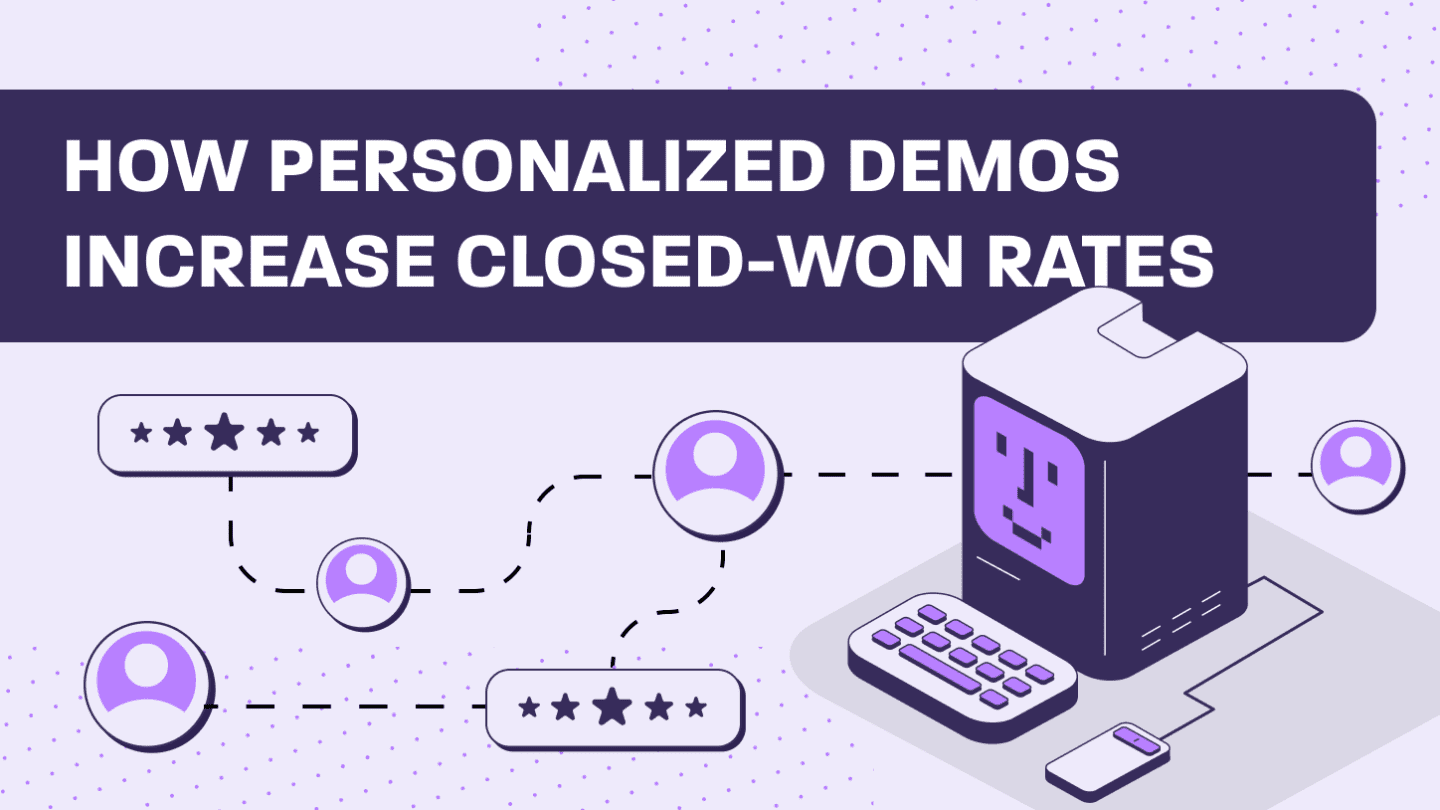Updated on August 1, 2025.
To generate more leads and turn interest into revenue, it’s time to optimize your SaaS funnel. A well-oiled SaaS funnel improves efficiency across marketing and sales, helping you move prospects from awareness to decision.
Are you seeing strong demo conversion rates but struggling to attract enough qualified leads? Or maybe your pipeline is packed, but you’re not closing deals?
Your SaaS funnel should help you find out exactly where things are going wrong in your marketing and sales process. It also gives your sales team a view of your prospect’s journey, challenges, opportunities, and decision-making process.
What is a SaaS Funnel?
A sales funnel is basically a visual way to show the path your prospective customer takes. It’s where marketing and sales partner to chart the buyers journey. A journey that starts long before they even hit your website. It doesn’t end until they lose interest or makes a purchase.
By creating a visual guide of the journey a prospect takes, your marketing and sales teams can understand when and how drop-offs happen and where additional follow-ups should occur in the process.
Sales funnel diagrams resemble an inverted pyramid representing the conversion rate between each of the stages. As users discontinue their journey or are disqualified, the funnel narrows.
Why SaaS Companies Need a SaaS Funnel?
A sales funnel is a combination of marketing and sales. Marketing attracts new potential customers to your business, while sales convert leads to customers.
Without marketing, you would not attract your target customers, and they would not learn how your business solves their pain while the sales team nurtures leads through the sales process.
With studies showing that companies that nurture their leads generate 50% more sales at a 33% lower cost, it’s hugely important. Creating a successful funnel will help you reach your leads at every point of their decision-making journey.
A SaaS funnel is a valuable tool to help you understand what’s working and what’s not. You can see where leads drop out of the funnel, when they engage with your company, pinpoint the best time to follow up and, eventually, convert to customers.
By understanding your sales funnel, you learn to address customers’ needs and to send the right message at the right time. You can also create a system to scale your sales process, forecast revenue, and increase conversions.
What are the Stages of a SaaS Funnel?
The different stages of the funnel may have slightly different terms and structures depending on your business. However, a sales funnel has three parts: top, middle, and bottom.
The top of the funnel: Awareness
When a potential customer starts their buying journey, they are trying to find a solution to a pain. They are still learning about the problem, as well as the best ways to resolve it. It’s at this point that they will learn about your business.
In terms of top-of-the-funnel marketing, this is the time to drive traffic to your website (and blog) and to position yourself as an expert in the field. It is not the time for a hard sell. It’s time to answer a customer’s questions, educate them, and become a trusted source of information. Consider creating how-to guides, explainer videos, blog posts, and lead magnets.
On the sales side, potentially, a sales rep may contact them via a cold call or email, or perhaps, they’ve been researching online, came across your business, and got in contact.
The sales team can engage with leads that have sent inquiries through the website or social media. They may reach out and conduct a discovery call to find out more information about the prospect’s needs.
When someone requests more information, they become a lead. At this point, the sales rep can ask questions and begin to qualify the lead as hot — or not — and the lead will move down, or out, the funnel accordingly. Depending on the actions the lead takes, in this stage, they may become marketing qualified leads.
Regardless of how this potential customer learns about your business, the critical point is that they are still very early in the process. They are asking questions about their problem and looking for a trustworthy source of information; they are not yet ready to buy.
The middle of the funnel: Consideration
When your prospects hit the middle of the funnel, potential customers are researching all available solutions to their problems. These buyers know the problem they are trying to solve. They may also be aware of the types of solutions to evaluate. But they may be unsure of which one will be the best.
For example, a busy agency has decided to have a better system for internal communication. However, they don’t know whether a messaging app like Slack or a full-blown project management tool like Monday is the best option.
In this stage of the SaaS funnel, the prospect will begin to ask questions related to the vendor. The lead is ready to select their preferred company, so your marketing needs to position your solution as the best answer to their pain. Examples of marketing content would include presentations, videos, and case studies.
Your sales team plays a pivotal role in bridging the gap between awareness and decision-making in the middle of the funnel. Sales reps will talk to the lead and ask questions to determine whether your offer is the right fit for them.
If the sales team sees buying intent, they should mark the lead as a sales qualified lead and push them towards a demo. Ensure that you follow the best practices when scheduling a demo to avoid no-shows and get that demo in the decision maker’s calendar.
The Middle of Funnel Pitfall
In B2B SaaS sales, the product demo is usually the final phase before rejecting or accepting a proposal. Make sure your demo puts your best foot forward:
- Your demo has to be fail-proofed. Live demos are great, but if your sales demo environment goes down, you’re stuck demoing bugs instead of solutions.
- Your demo must be personal. Your prospective client only cares about what you can do for them, not others. Show how you can solve their pain points and add value to their business.
- Your demo has to be compelling. Powerpoint isn’t going to hold anyone’s attention for long.
- Your demo should be concise. Focus on the essential features, not every tiny detail.
During the demo, you should be ready to handle your prospect’s objections and any questions about the product.
The bottom of the funnel: Action
The bottom of the SaaS funnel is where the magic happens. Once you’ve completed a successful demo, your prospect is in the final stage of the funnel. They are ready to choose which solution they’ll implement. Hopefully, you’ve used the right B2B closing technique, and you’re their SaaS vendor of choice.
While the decision is likely to have already been made by this point, your marketing team can reinforce the choice by providing comprehensive pricing pages, comparison tables, customer testimonials, and reviews.
Unless you’re a low-priced SaaS that can be easily bought online via a solid call to action, your sales team should be prepared to negotiate with the buyer at this point in the funnel. They may ask for some adjustments based on their requirements.
Are you willing to reduce your subscription fees if they agree to a longer contract term? Are you ready to speed up implementation if they commit to a specific contract length or higher tiered package?
Remember that negotiation is all about to give and take. Try to stay flexible and innovative during this stage to push them to sign on the dotted line.
Tips to Optimize your SaaS Funnel
1. Create a killer website
The first thing many leads will do when they find out about your product is visit your website.
Your website is so much more than just a white page with black text that explains to visitors what you do. Your website is the clearest indicator of your overall brand and the way you see yourself and the value you can add as a company.
Use well-designed graphics and punchy, action-driving text to convert your visitors and increase your sales. After all, 94% of the first impressions a visitor will make about your brand has to do with your website’s design.
Pro tip: Add an element of your website that’s particularly fun to navigate or engaging, so visitors end up staying a bit longer.
2. Embed a product tour
Product-led growth is the go-to-marketing strategy of the future. Boost your sales by using your product itself to convince your audience why they need it.
To give visitors a quick understanding of what your product does and how it can help, embed an interactive marketing software demo on your website.
Not only is it more engaging for visitors, but it’ll also give users the chance to play around with your product and fall in love with it for themselves.
Pro tip: Add a playful element to your product tour by adding images, gifs, and videos to your guide’s annotations.
3. Blogs / SEO optimization
Google is the king, so if you want to succeed you need to pay your dues.
Drive organic traffic to your website by optimizing your website’s structure and content for SEO. Do keyword research and build out topic clusters to present your brand as an authority on your topic. Write lots of blogs that link to and support the content on your product pages.
Pro tip: Include clear CTAs on each of your pages. Encourage blog readers to subscribe to your blog by supplying their email addresses.
4. Social media campaigns
Utilize the platform where your target audience hangs out to create a community.
Provide useful content that’ll encourage your followers to engage with your brand.
Share your company’s wins, relevant data, content you’ve created, and your brand voice. Brand your campaigns to be informational, funny, entertaining, or a mix of all three.
Besides growing your organic audience on social media, you should also utilize paid campaigns to target your audience across multiple platforms.
Pro tip: Don’t forget that your goal audience may be hanging out on some of the newer social media channels, like TikTok.
5. Google Ads (PPC)
Create ads on Google to target specific keywords.
Do your research to come up with keywords that your target audience searches for. Then create ads to target those keywords.
Set your price that you’d be willing to pay for each click and Google will charge you for every click that you receive through your ads.
Pro tip: Utilize the negative keywords option to rule out paying for clicks you know won’t bring you leads.
6. PR
There’s no replacement for good old-fashioned PR.
Get your company featured in newspapers, magazines, TV reports, and more. Show off your newest product releases, fundraising rounds, and whatever other exciting news your company produces.
Pro tip: Share your news segments on social media and tag the publication. This can lead to more views, shares, comments, and likes.
7. Demos
When prospects are in the middle of the B2B sales funnel, they are looking to educate themselves about the product options.
According to Forrester, 75% of B2B buyers want to do their research, without speaking to a sales rep. So as a sales rep, you need to be able to provide your prospects with information and tools so they can learn about your product on their own.
Send them a link to a guided, interactive sales demo of your product so they can see for themselves how it works and what they can do with it.
Pro tip: Personalize the sales experience for your prospects by including their names and company logos on the product demo, and showcasing the specific features that are relevant for them.
8. Lead generation forms
Let your site visitors fill out a form in order to get more information or request a meeting.
But don’t just stop there. Gather key data points about them, including the industry they work in, the size of their company, and their role within the company.
When creating your form, splitting your questions onto different pages can make the process feel less overwhelming for your visitor and can lead to more conversions.
Pro tip: A tool like Zoominfo FormComplete allows you to simplify the sales process for your visitors. All they need to do is add their email address and Zoominfo can provide you with the rest of the data you need.
9. Case studies
Nothing beats real-life experience and social proof when it comes to sales.
Build case studies of your successful clients to showcase how customers can benefit from your product. Create video or text-based testimonials that show off how to utilize your product for growth.
Gather quotes, stats, and numbers about your clients and feature them on your website, in your email marketing, on social media, and wherever else you can think of.
Pro tip: Create success stories from different industries and that focus on particular tools your product offers. This way you will be able to target prospects with the specific aspects that are relevant for them.
10. eBooks
Become an authority in your industry and produce the content to prove it.
Instead of simply selling, become a consultant. Gather the data, statistics, and street-smarts that you’ve gained along the way into a well-structured and densely packed eBook.
You can share an eBook like this with your prospects to build trust and credibility.
Pro tip: Put your eBook behind a paywall and require visitors to share their email addresses to download it. That’ll help you grow your list of potential leads.
11. E-mail marketing
Email marketing is crazy effective. We know that you know this, but did you know just how effective it is when it comes to sales?
Get this: According to DMA, email marketing campaigns earned an average of $42 for every $1 spent in 2019. We’re no mathematicians, but we believe that’s a 4200% return on investment (ROI).
Instead of sending spam or even harmless self-promotion, consider the type of content you enjoy receiving in your inbox. Nurture your leads with great newsletters, eye-catching subject lines, and useful information. Before sending anything, ask yourself how you’d feel receiving that type of email in your inbox.
Pro tip: Split your leads up by industry, pain points, needs, or whatever else makes sense. Then, send them content that is as personally relevant to them as possible.
12. Competitor comparison
In the middle of the sales funnel, your prospects are doing research and gaining information. This will likely include getting to know your competition as well.
If they’re going to look into the different options anyways, they might as well hear it from you. Break down the current market and your position within it.
Promote the specific features and tools you offer that your competitors don’t so your leads know that you’re the best option for them.
Pro tip: Be extremely honest. Don’t mislead your prospects or they won’t trust you and your brand will lose credibility.
13. Phone call / Zoom / in-person meeting
When your leads show a bit more interest, offer to jump on a quick call or schedule a short meeting to discuss whether your product can be the right fit for them.
The goal of this meeting is to understand the prospect’s needs, so ask open-ended questions aimed at getting long answers.
When you reach the demo phase, make sure you focus on value and don’t feature dump.
Pro tip: If you’re choosing between a phone call or Zoom, use the video option. Gong found that won deals used 41% more webcam than lost deals.
14. CTAs
At the bottom of the funnel, prospects are getting ready to buy. They did their research and know what they want. At this stage, they want an easy final transaction to seal the deal.
Use simple CTAs that direct the customer to the next step. Minimize extra clicks. Keep your copy clear and to the point. Make sure the buttons are brightly colored and featured prominently on the page.
Pro tip: Add urgency with time-sensitive wording, like “Book a Meeting Now” or Get Started Today”.
15. Landing Pages
Use landing pages with a clear message to get your client to the next step in the sales process. Create separate ones for each use case that explain all the pains your product can solve.
Give prospects the final information, encouragement, and confidence they need to book the closing meeting or to hand over their credit card information. Include client logos, testimonials, and value-focused content.
Pro tip: At this stage, less is more. They know what they want, they just need to be guided through the closing. Trim the fat on your landing pages and remove any unnecessary fluff.
16. Product walkthrough
Now that the sale is done, your goal is to get your new customer to start incorporating the product into their lives.
The more that they use your product successfully, the more that it will become a staple of their business. A happy customer is a long-term customer.
Arm your customer success team with the perfect tools to ensure your customers maximize all the capabilities of your product. Let them send customers interactive and guided product walkthroughs to simplify and speed up the onboarding process.
Pro tip: You can also use short product tours to educate your customers about new features. This will lead to higher adoption rates.
17. Ask for referrals
A report by Nielson found that 92% of people trust referrals from people they know.
Ask your happy customers to refer your product to their friends and network. Although it can be awkward, this is an extremely effective tool to drive more business and garner more sales.
Before you ask though, consider the strength of your relationship, the timing, and make sure you make it as easy for them to do as possible. Provide incentives to help encourage them to spread the word.
Pro tip: Wait until the customer compliments you or expresses satisfaction with your product to bring up the idea of referrals.
18. Build SaaS funnel reports
Audit the state of your sales funnel on a consistent basis to make sure it’s optimized.
Use your current numbers to forecast your overall performance and to create individual and team targets.
Then keep an eye on your goals and your quotas and whether you’re meeting them. Track the number of leads being brought in, your conversion rate, and your growth over time.
Pro tip: Keep your CRM up to date so that you can easily follow your sales trends.
19. Use lead scoring
Make sure you are qualifying your leads throughout the selling process.
Consider the common denominators that make prospects more likely to want and need your product. Determine the types of businesses that can utilize your product. Then track how prospects engage with your brand to determine their interest.
Build a lead scoring formula to quantify your leads and rank them. This way you’ll know which ones to spend more time nurturing.
Pro tip: Make use of lead scoring software to help track and qualify your leads.
SaaS funnel example and terminology
Here’s an example of the stages of a B2B SaaS sales funnel, although the exact terminology can vary depending on your business model and target audience:
- Untouched: Someone who has not yet heard about your offering. They need to be attracted to your website and other marketing collateral.
- Visitor: When a previously untouched user lands on your website.
- Lead: A lead that has filled out their information somewhere on your website or other content.
- Marketing Qualified Lead (MQL): These leads have shown interest in your offering by engaging further down the funnel.
- Sales Qualified Lead (SQL): Leads your sales team has identified as engaged enough to warrant a sales follow-up.
- Hot Buyer: Real sales opportunities that are ready to buy.
- Customer: The lead has made a purchase.
Using your B2B SaaS Funnel
Once you’ve built your sales funnel, start measuring your success and failure rates at each stage. Perhaps you’ve generated a lot of interest at the bottom of the funnel, but you can’t compel any interested parties to commit to a demo. Maybe you’ve moved plenty of customers into the demo stage, but they simply won’t sign.
Walnut can help you at every stage of the funnel:
- Top of funnel: With Walnut, you can create compelling use cases with demos embedded on your website so that customers in the information-seeking stages can see precisely how your product can help them in practice. In addition, your sales team can send a link to an interactive sales demo to the prospects even before the demo stage.
- Middle-of-the-funnel: Present your prospects with engaging, interactive product demos that speak to their pain points and requirements. Collect insights on their demo usage to optimize your chances to close the deal.
- Bottom of the funnel: Use the insights and analytics you’ve collected during the demo phase to understand how your product solves the prospect’s pain. Leverage this knowledge to optimize your demo use-case. Empower your champion by sending them a link to a pixel perfect demo they can share with their management – or decision makers.
- Post-sale: Once you’ve closed the deal, use interactive demo software to create customer onboarding tutorials customized to each client.
Speak with a Walnut expert to find how we can superpower your sales funnel.





